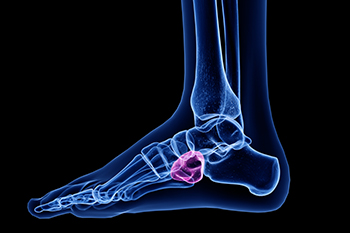
Cuboid syndrome affects the cuboid bone located on the foot's outer side. It occurs when the cuboid bone becomes slightly dislocated or out of alignment. The main causes of cuboid syndrome include sudden twisting movements, overuse, or injuries like ankle sprains that put stress on the foot. Symptoms typically include pain on the outer part of the foot, difficulty walking or standing for long periods, and swelling or tenderness surrounding the affected area. In some cases, individuals may feel a sensation of instability in the foot. Diagnosing cuboid syndrome usually involves a physical examination where a chiropodist will check for tenderness and misalignment. Imaging tests like X-rays may rule out fractures, but in many cases, the diagnosis is made based on symptoms and the history of injury. If you have pain on the outside of your foot, it is suggested that you consult a chiropodist who can offer you effective treatment solutions.
Cuboid syndrome, also known as cuboid subluxation, occurs when the joint and ligaments surrounding the cuboid bone in the foot become injured. If you think that you may have cuboid syndrome, please consult with Emily Yu, B.Sc from Uptown Foot Care Clinic. Our specialist will assess your condition and provide you with quality foot and ankle treatment.
Causes
The cuboid bone is one of the seven tarsal bones located in the foot. Cuboid syndrome develops when the cuboid bone moves down and out of alignment with the other bone (calcaneus bone) in the joint of the foot. Cuboid syndrome can be the result of a sudden injury like an ankle sprain, or it may develop slowly over time from repetitive tension through the bone and surrounding structures.
Symptoms
The most common symptom of cuboid syndrome is pain on the outside of the foot which may worsen with activity.
Other possible symptoms include:
Difficulty bearing weight on the affected foot
Swelling
Sensitivity on the bottom of the foot
Reduced range of motion
Diagnosis
A chiropodist can diagnose cuboid syndrome based on your medical history and a physical examination of the foot. Imaging studies, such as X-rays or MRIs, often fail to show the dislocated cuboid.
Treatment
Treatment often includes resting, icing, compressing and elevating the affected foot, taping, wearing orthotic inserts, and taking anti-inflammatory medications to reduce pain. The chiropodist may also be able to manipulate the dislocated bone back into alignment.
If you have any questions, please feel free to contact our office located in . We offer the newest diagnostic and treatment technologies for all your foot care needs.
